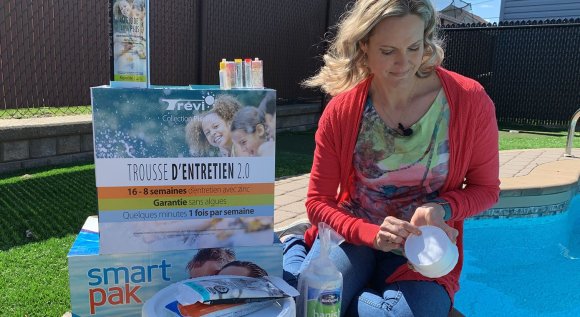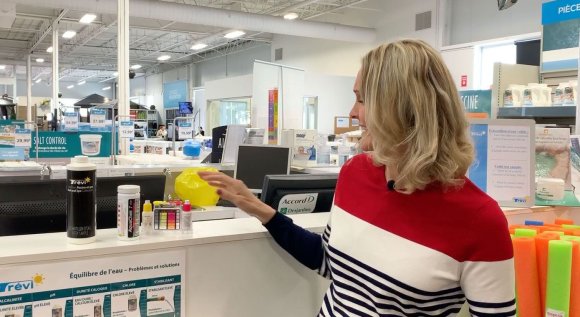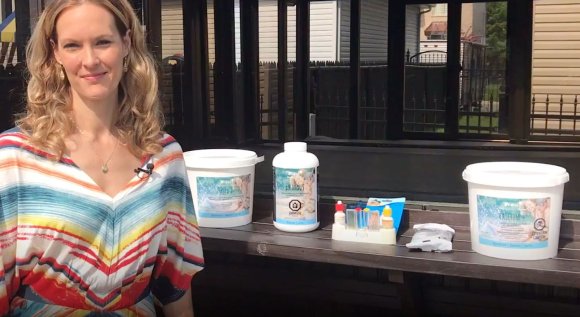
Balancers products
Calcium+ - 55
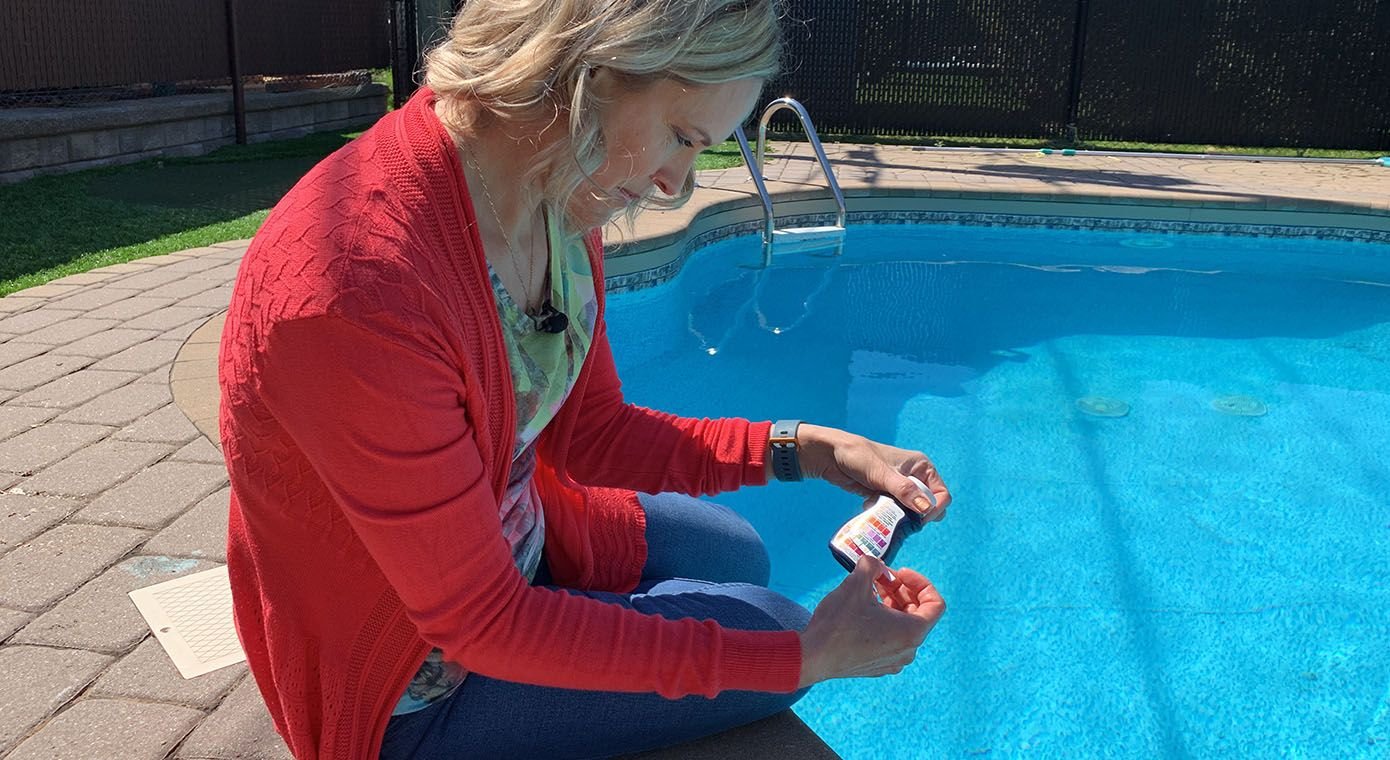
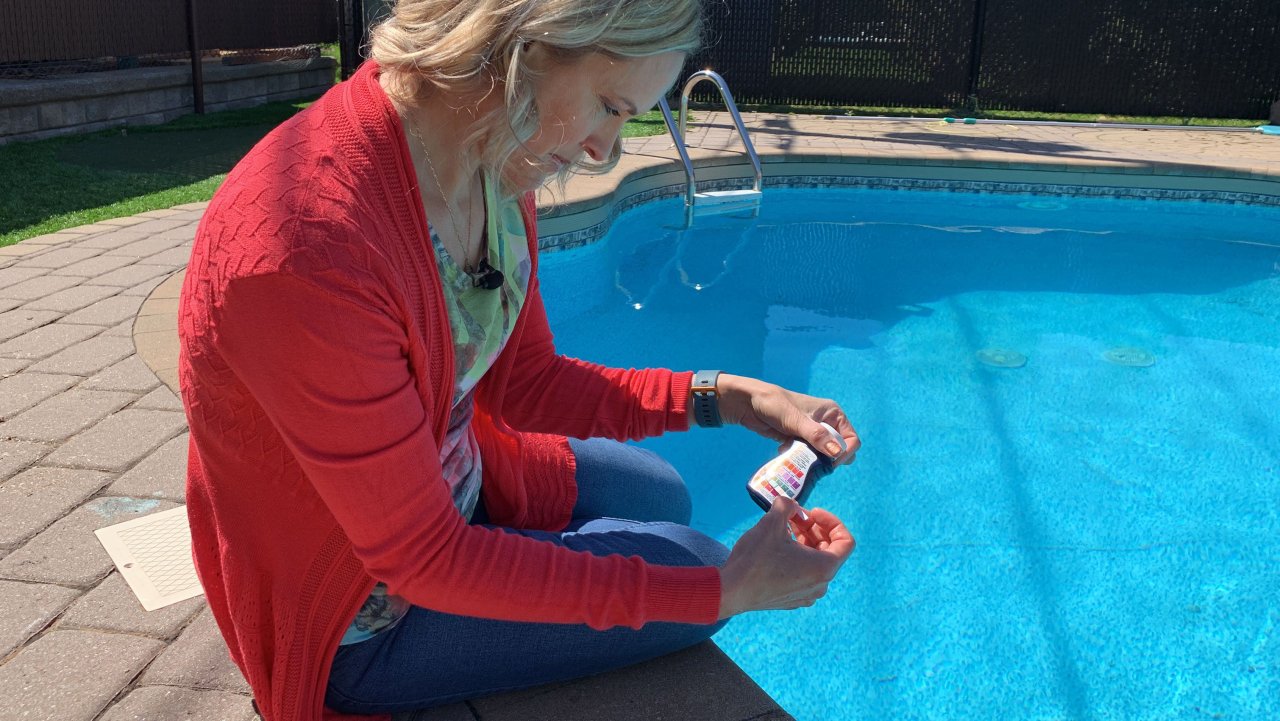
It’s essential to test your pool water with strips or drops once or twice a week throughout the summer. Today, we’ll do it together so you can understand the procedure.
At the beginning of the season, always replace your bottles or test strips. A fresh start ensures that your tools are in good condition and reliable.
Drop tests indicate our two basic data; pH and chlorine. With the test strips, you can read more parameters, including the pH and chlorine levels.
If you’re using a drop test, start by rinsing the small container and filling it. Don’t take the water right at the surface. Put your arm a few centimeters into the water to ensure the most accurate results possible. Adjust the water level to the small measuring bars. Add four drops of each product; red on the pH side and yellow on the chlorine side. Put back the plugs, mix, and compare the color of the water with the test scale.
If the pH level is too high, you can lower it with pH-. If the pH level is too low, visit the store for advice on how to adjust your pool parameters.
Now, let’s talk about chlorine. If the level is too low, you’ll increase the production of the salt system or add more chlorine to the pool. If the level is too high, you can take a break from adding chlorine for a few hours, even a day, or gradually decrease the chlorine intake. If you have a salt system, position the switch to reduce the chlorine production.
If you are using test strips, dip a strip in the water and remove it. Wait 15 seconds and compare the results with the scales on the container. The pH and chlorine levels are easy to adjust. However, if the other parameters are incorrect, bring a water sample for testing at the store to get advice on how to keep your water clean, safe, and pleasant for swimming.
